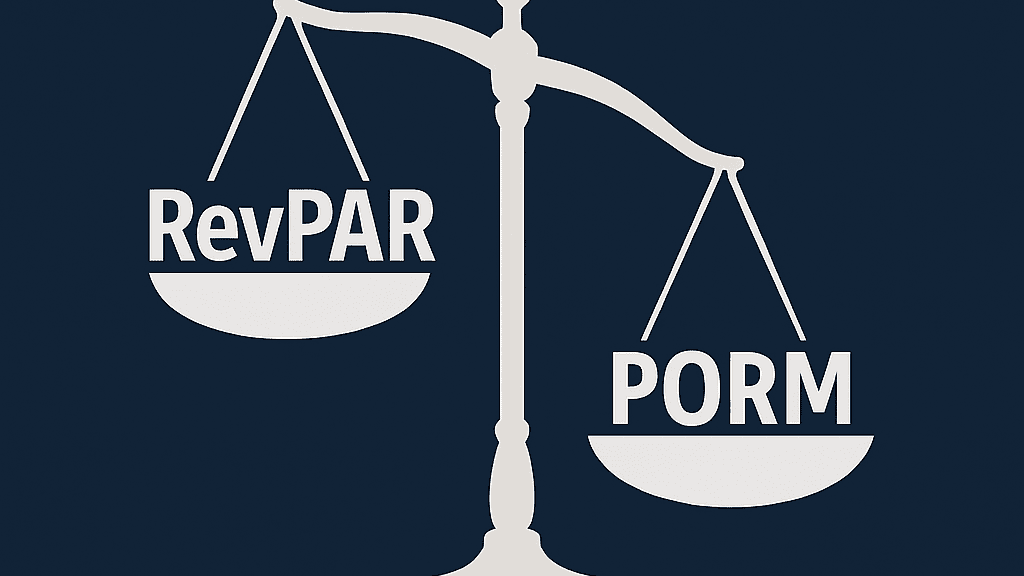
Let’s Stop Obsessing Over RevPAR. It’s Time to Manage to Profit
-
Chris Legaspi, CDMP, CRME, CHIA, CHSL Chief Commercial Officer, Archipelago International and National Advisory Board, HSMAI Indonesia
RevPAR served its purpose. It let hotels benchmark performance, track trends, and align across brands. But that world is gone. Costs are deeper. Guest behavior is less predictable. Distribution is more complex. RevPAR doesn’t capture any of that.
We don’t run our business on occupancy and rate alone anymore. We run it on what stays in the bank.
That means looking beyond topline revenue. Not just what we charge—but what we keep. It means calculating net contribution per booking, not just average rate. It means understanding who our guests are, what they spend, and what it costs us to serve them.
Many hotels are shifting to this view. Not because RevPAR is wrong—but because it’s too narrow.
Sheryl Kimes warned us about this more than a decade ago. RevPAR, she said, ignores the real costs of distribution and fails to capture non-room revenue or margin differences across segments (Kimes, 2011). That’s a problem when those exact factors now drive performance.
GOPPAR, TRevPAR, and RevPAC all stepped in to fill the gap. But the most complete framework right now is Profit-Oriented Revenue Management—PORM—developed by Dr. Detlev Remy and his team at Singapore Institute of Technology (Remy, Boo, & Tee, 2023).
This isn’t just a metric. It’s a shift in how we look at the business.
Take a Bali resort reporting $180 RevPAR. On the surface, performance looked strong. But after factoring in channel commissions, marketing, and operational costs, the real NRevPAR dropped to $118.85. Same rooms. Same ADR. Same guests. But a different outcome.
That’s what PORM uncovers. Not hypothetical trends. Actual profit.
It also gives us a more accurate view of distribution. OTAs, GDS, and metasearch are not the problem. They drive reach and fill rooms. But the real question is: what’s their net value after costs?
A channel with a 25% commission isn’t automatically bad. If it delivers high-spending guests or drives profitable stay patterns, it can outperform cheaper channels. The point is to measure with clarity—not assumption.
PORM also connects the dots across revenue streams. It sees what RevPAR misses—spa bookings, F&B, event spend. At Rosewood Paris, pre-stay personalization led to bundled offers that increased total guest spend by 20% (Remy et al., 2023). That doesn’t show up in traditional metrics. But it shows up in profit.
It sharpens segmentation, too. A resort in Bali found families brought in 40% more total revenue than couples. That one insight drove a change in packaging, room mix strategy, and upsell tactics. Not gimmicks—just better math.
Loyalty strategy also looks different through a PORM lens. Accor moved from frequency-based tiers to value-based tiers. Guests were rewarded based on total spend, not just stays. It worked. Repeat bookings from top contributors jumped 22% (Remy et al., 2023).
The challenge? Infrastructure. Many hotel systems still operate in silos. Your PMS may not speak to your POS or CRM. Without connected data, PORM becomes harder to activate. But change is coming. Cloud platforms and APIs are making integration possible. Some are already embedding PORM logic directly into dashboards.
PORM works because it reflects how hotels actually operate—across teams, channels, and touchpoints. It’s not theoretical. It’s operational.
And it forces a more honest question: Which guests, channels, and products truly drive profit?
Not all bookings are equal. If your team doesn’t see that, they’re pricing blind.
We’re not ditching RevPAR. We’re putting it in its place. Useful. But limited.
Revenue management isn’t about selling more rooms. It’s about building more profitable ones.
References
Kimes, S. E. (2011). The Future of Hotel Revenue Management. Cornell Hospitality Report, 11(14). Cornell University School of Hotel Administration.
Remy, D., Boo, H. C., & Tee, S. M. (2023). From Traditional to New Hotel Revenue Management Metrics: An Exploratory Study on the Potential of NRevPAR and RevPAC. Singapore Institute of Technology.
Zheng, W., & Forgacs, G. (2017). Total Revenue Management: A New Hotel Paradigm. International Journal of Hospitality Management, 64, 1–10.
Mauri, A. G. (2012). RevPAG: A New Metric to Maximize Guest Profitability. Journal of Revenue and Pricing Management, 11(3), 274–286.



